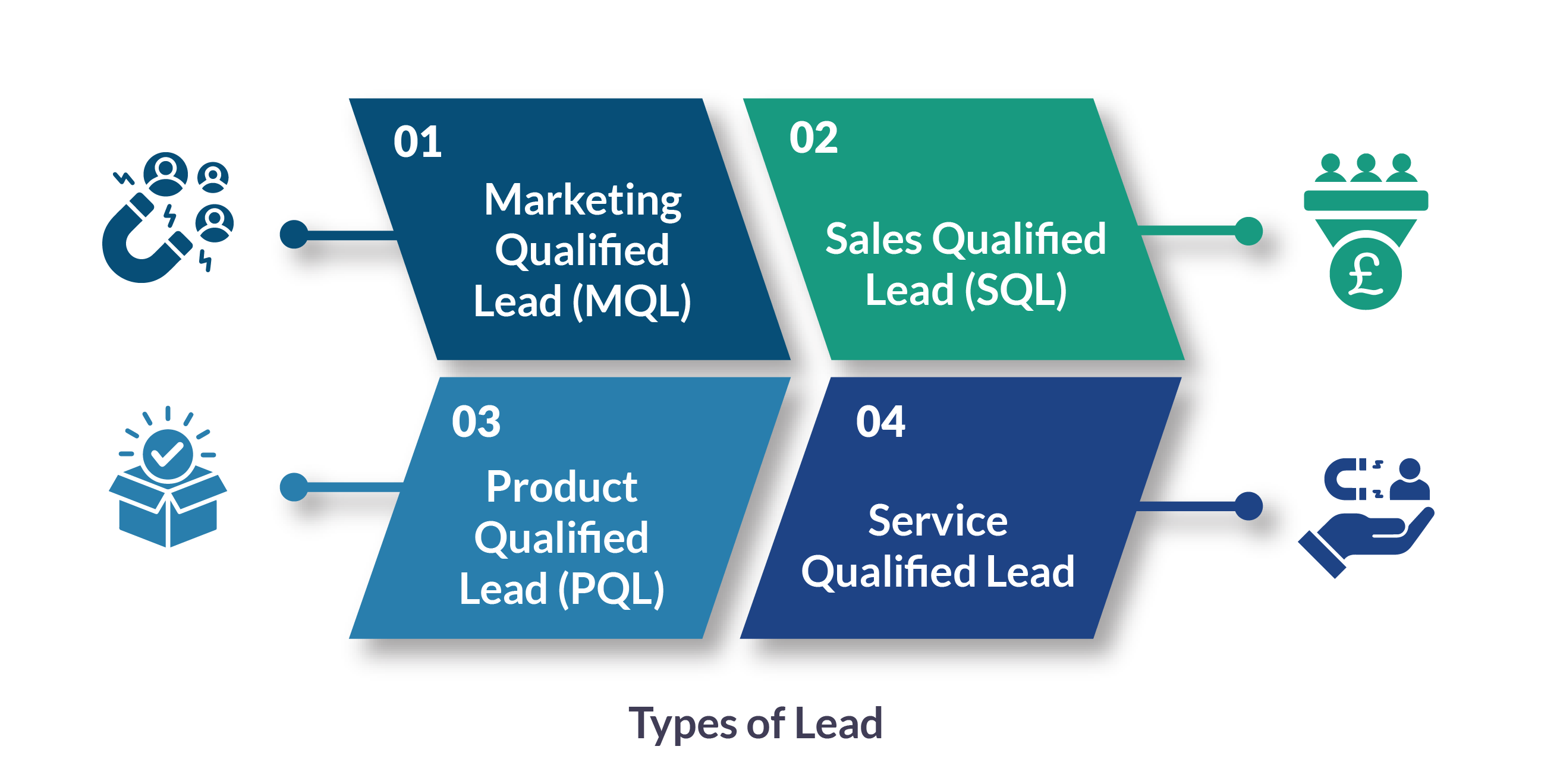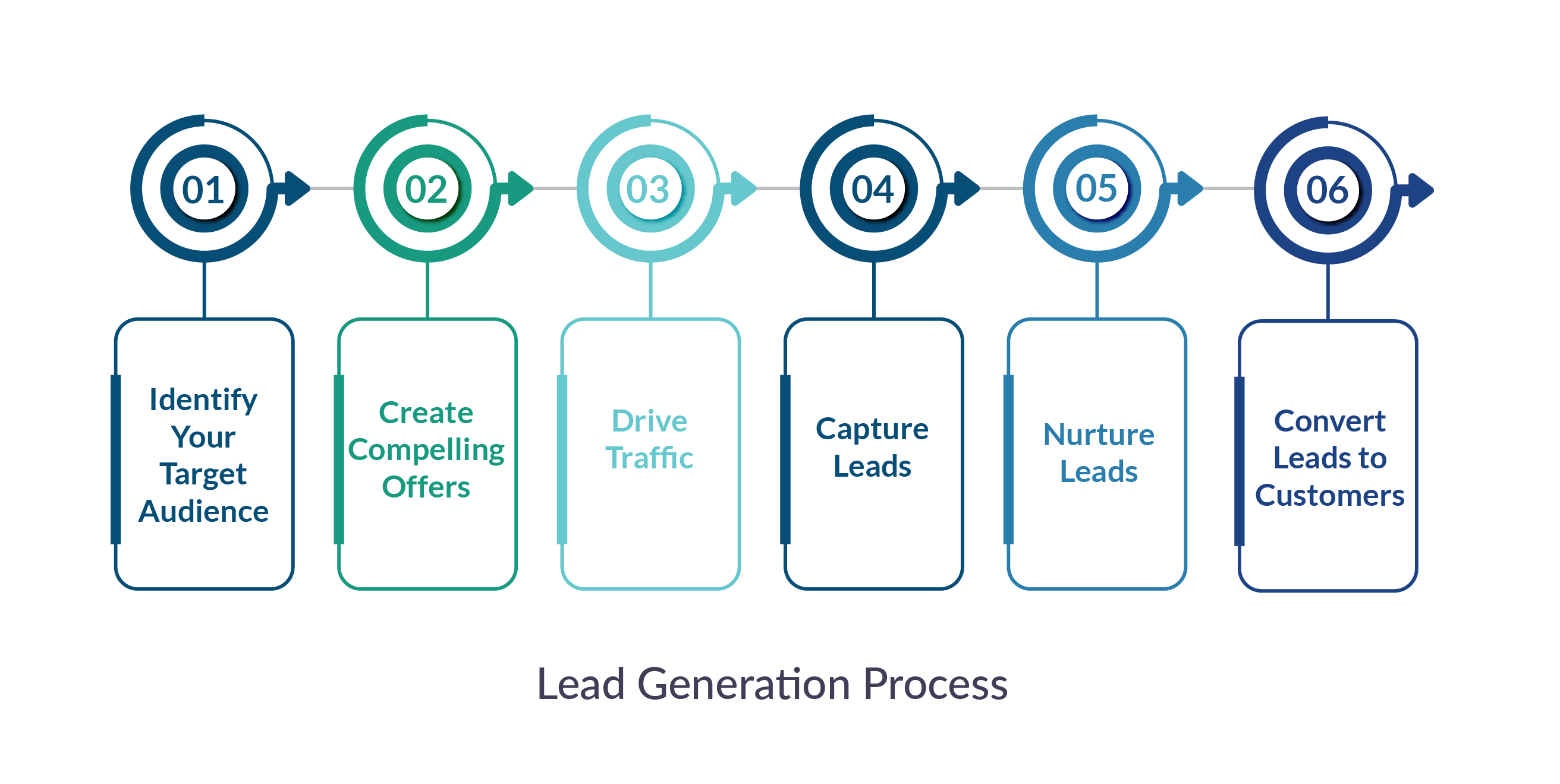In today’s digital age, generating high-quality leads is crucial for sustaining and growing any business. Effective lead generation strategies are essential for sustainable growth, whether you’re a startup looking to build your customer base or an established company aiming to expand. But what exactly is lead generation, and why is it so important? This comprehensive guide will explore everything you need to know about lead generation, from understanding different types of leads to effective strategies for generating them.
What is a Lead?
A lead is a potential customer interested in your product or service. This interest is often indicated by filling out a form, subscribing to a newsletter, or engaging with your content. Leads are the lifeblood of any sales pipeline, representing potential sales opportunities.
Types of Lead

Marketing Qualified Lead (MQL)
An MQL is a lead who has shown interest in your marketing efforts but has yet to be ready to make a purchase. These leads have engaged with your content, downloaded resources, or visited your website multiple times.
Sales Qualified Lead (SQL)
An SQL is a lead vetted by your sales team and considered ready for direct sales engagement. These leads have shown a higher level of interest and are more likely to convert into paying customers.
Product Qualified Lead (PQL)
A PQL is a lead who has used your product and taken actions that indicate a strong interest in becoming a paying customer. This type of lead is common in freemium or trial-based business models.
Service Qualified Lead
A service-qualified lead is a customer who is interested in an upsell or cross-sell opportunity within your service offerings. They are already customers but are looking for additional services.
What is Lead Generation?
Lead generation attracts and converts strangers and prospects into someone who has indicated an interest in your company’s product or service. It’s a crucial first step in the sales funnel and vital to the buyer’s journey.
In simpler terms, lead generation is about finding unique ways to attract people to your business. The goal is to guide them towards your offers and convert them into paying customers.
Types of Lead Generation
Inbound Lead Generation: Inbound lead generation focuses on attracting potential customers through valuable content and experiences tailored to them. This includes blogs, SEO, social media, and more.
Outbound Lead Generation: Outbound lead generation involves proactively contacting potential customers through cold calling, direct mail, and email outreach.
B2B Lead Generation: B2B lead generation strategies focus on capturing leads from other businesses, often through targeted content and personalised outreach.
Online Lead Generation: To capture leads, online lead generation uses digital channels such as websites, social media, and email marketing.
Offline Lead Generation: Offline lead generation involves traditional methods such as networking events, trade shows, and direct mail.
Hybrid Lead Generation: Hybrid lead generation combines online and offline methods to capture and nurture leads from multiple channels.
Why is Lead Generation Important?
- Builds Brand Awareness: Lead generation strategies often involve creating valuable content and engaging with potential customers, naturally increasing your brand’s visibility and recognition.
- Increases Sales Opportunities: By consistently generating leads, you create a pool of potential customers, increasing your chances of making sales.
- Provides Valuable Customer Insights: Lead generation often involves collecting data about potential customers, which can inform your marketing and product development strategies.
- Cost-Effective Marketing: Lead generation allows you to focus your resources on individuals who have already shown interest in your offerings compared to broad, untargeted marketing efforts.
- Builds Lasting Relationships: Lead generation isn’t just about immediate sales; it’s about nurturing relationships that can lead to long-term customer loyalty.
Lead Generation Process

1. Identify Your Target Audience: Understand who your ideal customers are and where to find them.
2. Create Compelling Offers: Develop valuable content or incentives that resonate with your audience’s needs.
3. Drive Traffic: Use various channels to attract visitors to your offers (e.g., social media, search engines, email marketing).
4. Capture Leads: Convert visitors into leads by enticing them to provide their contact information.
5. Nurture Leads: Build relationships through targeted communication and personalised content.
6. Convert Leads to Customers: Move-qualified leads through the sales funnel towards a purchase decision.
How to Generate Leads
While purchasing leads may seem convenient, organic lead generation methods yield higher quality leads. Methods include:
- Content Marketing: Create valuable content that attracts and engages your audience.
- SEO (Search Engine Optimization): Optimising your website to rank higher in search engine results.
- Social Media Marketing: Use social platforms to engage with your audience and promote your content.
- PPC (Pay-Per-Click) Advertising: Placing ads on search engines and social media to drive targeted traffic.
- Email Marketing: Build and nurture relationships with potential customers through personalised email campaigns.
How to Qualify a Lead
Qualifying leads ensures you prioritise those most likely to convert. Key criteria include:
- Interest: Gauge the prospect’s level of interest based on their engagement with your content.
- Fit: Evaluate whether the prospect matches your ideal customer profile.
- Budget: Determine if the prospect has the financial resources to purchase.
- Authority: Identify decision-makers within the organisation.
- Need: Assess if the prospect genuinely needs your product or service.
Lead Qualification and Scoring
Not all leads are created equal. It’s crucial to qualify and score your leads to focus your efforts on those most likely to convert. Consider factors such as:
- Demographic information
- Company size and industry
- Engagement with your content
- Position in the buying cycle
Use a lead scoring system to assign points based on these factors, helping your sales team prioritise their efforts.
Nurturing Leads
Once you’ve generated leads, the work isn’t over. Lead nurturing is developing buyer relationships at every stage of the sales funnel. Effective lead nurturing strategies include:
- Personalised email campaigns
- Retargeting ads
- Providing valuable content at each stage of the buyer’s journey
- Offering product demos or free trials
- Following up with leads at appropriate intervals
Measuring Lead Generation Success
It’s crucial to track key metrics to optimise your lead generation efforts. Some important KPIs include:
- Conversion rate
- Cost per lead
- Time to conversion
- Lead quality score
- Customer Lifetime Value (CLV)
Track these metrics and gain insights into your lead generation performance using tools like Google Analytics, CRM software, and marketing automation platforms.
Lead Generation Strategies

Facebook Lead Generation: Facebook offers tools such as lead ads and custom audiences to help you capture leads directly on the platform.
Twitter Lead Generation: Use Twitter’s Lead Generation Cards to collect leads directly from tweets and build targeted campaigns to engage with potential customers.
LinkedIn Lead Generation: Leverage LinkedIn’s professional network to target decision-makers and capture leads through Sponsored Content, InMail, and more.
PPC Lead Generation: Pay-per-click (PPC) advertising can drive targeted traffic to your landing pages and capture high-quality leads.
B2B Lead Generation: B2B lead generation focuses on capturing leads from other businesses.
This involves more targeted strategies, such as account-based marketing and industry-specific content.
Tips for Lead Generation Campaigns
- Define Your Target Audience: Understand your ideal customer and tailor your campaigns to meet their needs.
- Create Compelling Offers: To attract potential leads, offer something of value, such as a free eBook, trial, or consultation.
- Optimise Landing Pages: Ensure your landing pages are user-friendly and optimised for conversions.
- Track and Analyse Performance: Use analytics tools to track your campaign performance and make data-driven decisions.
- Follow-Up: Follow up promptly with leads to nurture relationships and guide them through the sales funnel.
Lead Generation Trends and Benchmarks
Staying competitive in lead generation requires keeping up with the latest trends and benchmarks. Key trends currently include the growing use of AI and machine learning, increased personalisation, and the integration of multiple channels.
By staying informed about industry trends and benchmarks, you can optimise your lead generation efforts:
- Conversion Rates: Tracking how many leads convert into paying customers.
- Technological Advancements: Embracing AI, automation, and data analytics to enhance lead generation strategies.
- Omni-Channel Approach: Integrating multiple channels for a seamless customer experience.
Common Lead Generation, Challenges and Solutions
1. Generating High-Quality Leads
- Challenge: Attracting leads who are genuinely interested in your product or service.
- Solution: Focus on creating highly targeted content and offers that appeal to your ideal customer profile.
2. Standing Out in a Crowded Market
- Challenge: Differentiating your brand in a competitive landscape.
- Solution: Develop a unique value proposition and emphasise what makes your product or service unique.
3. Aligning Sales and Marketing
- Challenge: Ensuring seamless collaboration between sales and marketing teams.
- Solution: Implement a clear lead handoff process and regular communication between teams.
4. Keeping Up with Changing Technology
- Challenge: Staying current with evolving digital marketing tools and platforms.
- Solution: Invest in ongoing training and be willing to experiment with new technologies.
5. Maintaining GDPR and Data Privacy Compliance
- Challenge: Ensuring lead generation efforts comply with data protection regulations.
- Solution: Implement transparent opt-in processes and maintain transparency regarding the use of customer data.
Conclusion
Lead generation is a complex but essential part of any business strategy. By understanding the various types of leads, implementing effective generation strategies, and continuously refining your approach, you can capture and nurture high-quality leads that will drive your business growth in 2024 and beyond.
Note: Effective lead generation is about more than quick wins; it’s about building lasting relationships with potential customers. Focus on providing value at every stage of the buyer’s journey, and you’ll be well on your way to generating high-quality leads that convert into loyal customers.
Frequently Asked Questions
Q1. Why Not Just Buy Leads?
Buying leads can seem like a quick solution, but it often leads to low-quality prospects who are not genuinely interested in your product or service. Generating your own leads ensures higher quality and better conversion rates. Organic lead generation fosters relationships and builds trust, leading to more sustainable business growth.
Q2. Why Do You Need Lead Generation?
Lead generation is essential because it helps businesses attract potential customers and convert them into loyal clients. Effective lead-generation strategies can increase sales, improve ROI, and help build a robust customer base.
Other Articles
